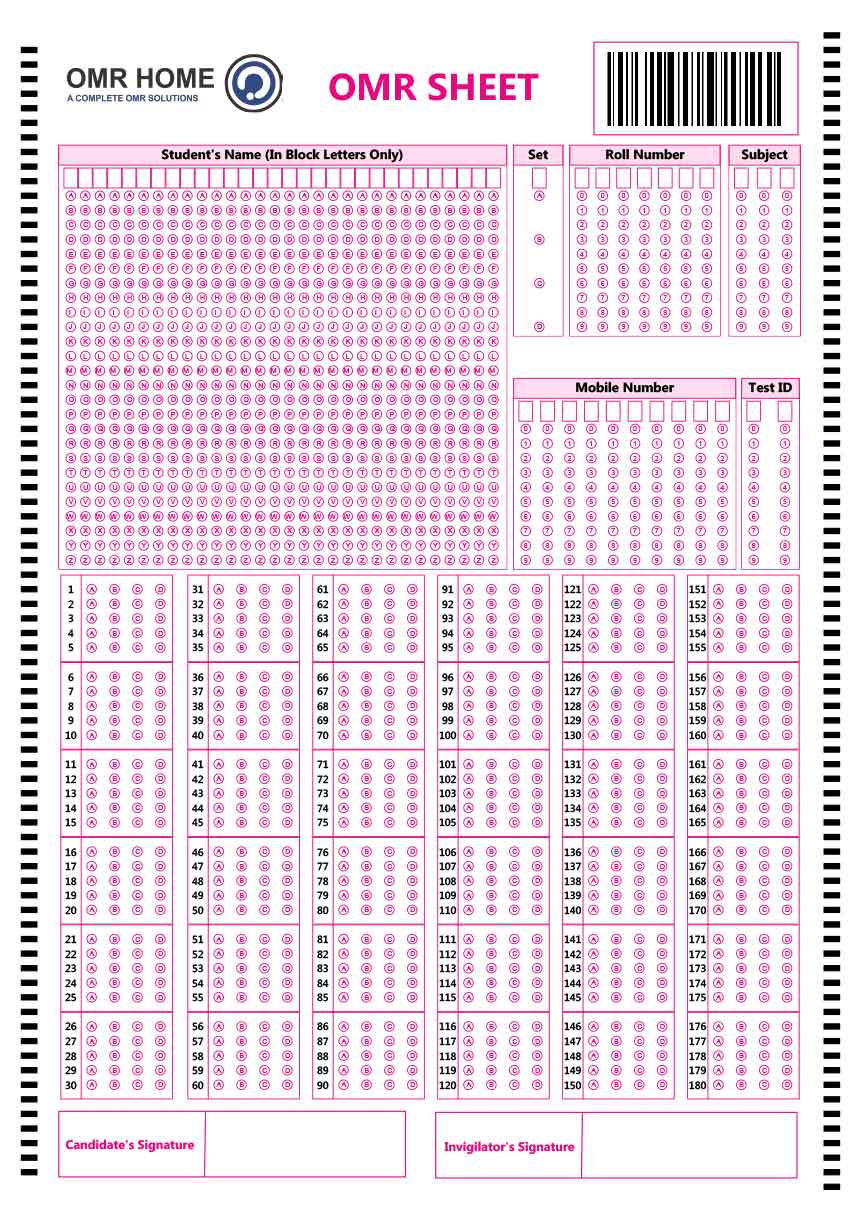In the realm of education and assessments, OMR sheets stand as a cornerstone in the process of efficiently grading large quantities of multiple-choice questions. The meticulous evaluation of these sheets ensures accuracy and speed, making them an indispensable tool in various examination scenarios. In this comprehensive guide, we delve into the intricacies of OMR sheet evaluation, unraveling the nuances that contribute to its efficiency and accuracy.
Understanding OMR Sheets
OMR, or Optical Mark Recognition, sheets are specialized forms designed for multiple-choice assessments. These sheets consist of bubbles or boxes that respondents mark to indicate their answers. The key advantage lies in the swift and automated evaluation process, facilitated by scanning technology that detects marked areas.
The Technological Backbone
Optical Mark Recognition Technology
At the core of OMR sheet evaluation is Optical Mark Recognition technology. This cutting-edge tech employs optical sensors to detect and interpret marks made on the sheet. The sheets are then scanned, and the data is processed through sophisticated algorithms, providing a rapid and error-free evaluation process.
Scanning Precision
The efficiency of OMR sheet evaluation hinges on the precision of the scanning process. High-quality scanners ensure accurate capture of marked responses, eliminating the possibility of errors in grading. This technological precision sets the stage for reliable assessment outcomes.
Steps in OMR Sheet Evaluation
1. Sheet Design
The journey of OMR sheet evaluation commences with meticulous sheet design. Each aspect, from the layout to the placement of answer options, plays a pivotal role. Clarity and simplicity are paramount, as they contribute to the accuracy of data extraction during scanning.
2. Marking Clarity
Respondents play a crucial role in the success of OMR sheet evaluation. Clear instructions on marking, coupled with proper guidance, ensure that candidates understand the process. This, in turn, minimizes the chances of errors and discrepancies during evaluation.
3. Scanning Process
Once the sheets are filled, the scanning process takes center stage. High-speed scanners swiftly capture the marked responses, converting them into digital data. The use of advanced software enhances the accuracy of this phase, reducing the likelihood of misinterpretation.
4. Data Interpretation
The heart of OMR sheet evaluation lies in the accurate interpretation of scanned data. Powerful algorithms process the digital information, mapping responses to correct answers. This stage is where the magic happens, converting raw data into meaningful results.
Advantages of OMR Sheet Evaluation
1. Time Efficiency
One of the primary advantages of OMR sheet evaluation is its unparalleled time efficiency. The swift scanning and automated grading significantly reduce the time required for result compilation, making it an ideal choice for large-scale assessments.
2. Error Reduction
The automated nature of OMR sheet evaluation minimizes the scope for human errors in grading. This not only enhances the reliability of results but also instills confidence in the integrity of the assessment process.
3. Scalability
Whether it’s a classroom test or a nationwide examination, OMR sheet evaluation scales seamlessly. The technology’s adaptability to various assessment sizes makes it a versatile solution for educational institutions and examination bodies.
Overcoming Challenges in OMR Sheet Evaluation
1. Design Flaws
While OMR sheet evaluation is robust, any design flaws in the sheets can lead to misinterpretation during scanning. Regular reviews and refinements in the sheet design process are crucial to maintaining accuracy.
2. Marking Irregularities
Clear communication with respondents is vital to address marking irregularities. Educating candidates on the correct way to mark responses minimizes errors and ensures a smooth evaluation process.
The Future of OMR Sheet Evaluation
As technology continues to evolve, so does OMR sheet evaluation. Integration with artificial intelligence and machine learning holds the promise of even greater accuracy and efficiency in the coming years. The future envisions a seamless blend of technological advancements and educational assessment.
In conclusion, OMR sheet evaluation stands as a testament to the fusion of technology and education. Its efficiency, accuracy, and scalability make it a formidable player in the realm of assessments. As educational landscapes evolve, so does the significance of this powerful evaluation tool.


